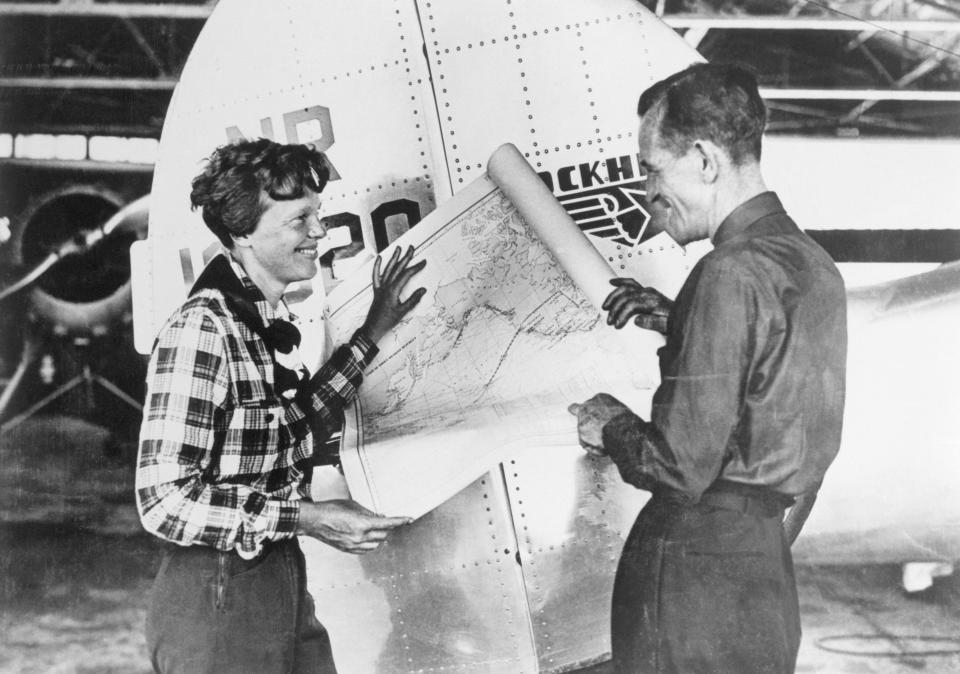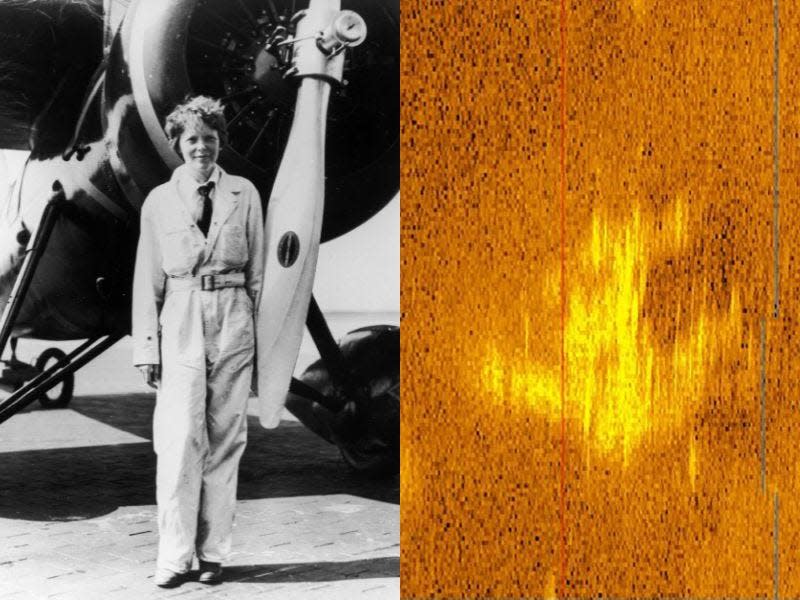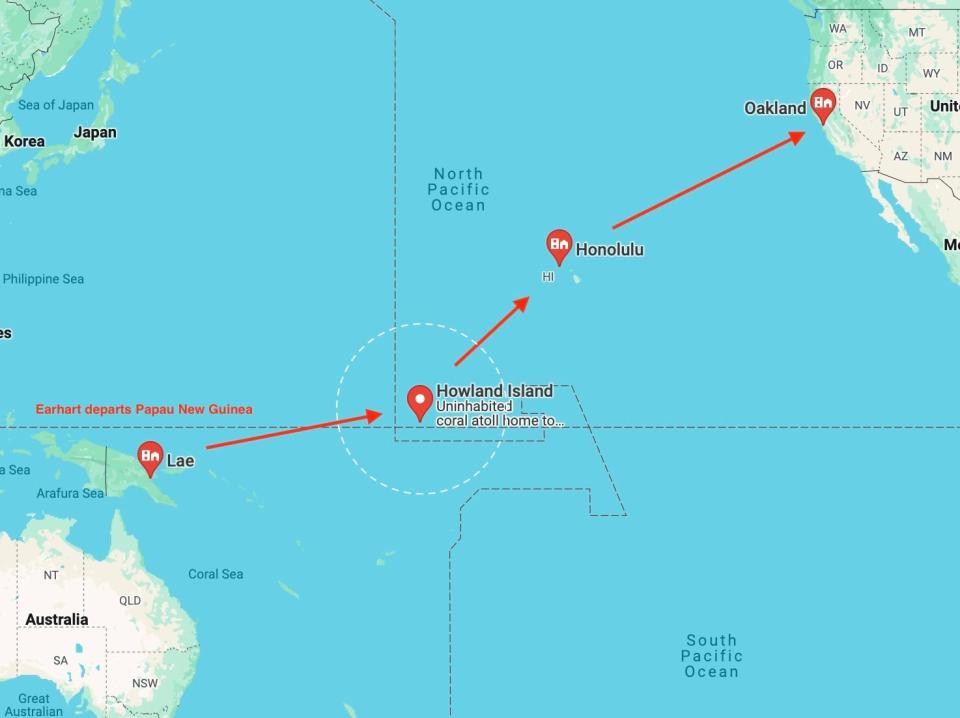Amelia Earhart's relative says new sonar images could be aviator's vanished plane
- Oops!Something went wrong.Please try again later.
Amelia Earhart's relative says new sonar images could show Earhart's long-vanished airplane.
A pilot and former US intelligence officer, Tony Romeo, took the images in the Pacific Ocean.
Romeo and his team plan on returning to the site to collect more evidence of the presumed wreckage.
A relative of Amelia Earhart agrees that a recent sonar image could show the iconic pilot's long-vanished aircraft.
Bram Kleppner, whose mother is Amelia Earhart's niece, confirmed that the images could indicate the plane's resting place, which disappeared alongside Earhart in 1937 when she attempted to circumnavigate the globe.
This is important — the sonar images captured in a remote region of the Pacific Ocean could offer a long-awaited resolution to a nearly nine-decade-old mystery of what happened to Earhart and her navigator Fred Noonan.
"It's in about the right place. It sure looks like a plane," Kleppner told The Times of London.
Kleppner's mother, 92-year-old Amy Kleppner, is one of the last surviving people to have known the famed aviator, reported The Times.
If the remains of Earhart are ever found, Kleppner said his mother hopes they would be buried in her hometown of Atchinson, Kansas.
"It was where Amelia was born and where she spent a lot of her youth being cared for by her grandparents," said Kleppner's son.
If her Lockheed aircraft can be retrieved, it should go on display in the Smithsonian Museum in Washington DC, he said.
"With luck, it will end up in a place where anyone who's interested can go and spend some time with it," said Kleppner, per The Times.
Fuzzy images of a plane-shaped patch deep on the ocean floor

In January, Tony Romeo, a pilot and former US Air Force intelligence officer, unveiled the sonar images, possibly showing Earhart's twin-engined monoplane airliner, The Wall Street Journal reported.
The Lockheed 10-E Electra aircraft vanished during Earhart's historic attempt to circumnavigate the globe in 1937, as they center on a plane-shaped fuzz.
"According to Romeo and his crew, it's roughly the right size to be the Lockheed Electra," said Kleppner.
Earhart and Noonan likely disappeared about 100 miles from Howland Island, near the site of the sonar images.
Business Insider contacted Bram Kleppner for comment.

"The next step is confirmation — we've got to go back out with different sorts of sensors and really photograph it well and take a look at how the artifact is sitting on the seabed," Romeo told Business Insider's Katherine Tangalakis-Lippert.
Romeo and his team hope to retrieve the Electra from a depth of 16,400 feet if it proves to be Earhart's plane. The ambitious endeavor is estimated to cost hundreds of millions of dollars.
There's no guarantee it's been found, expert says

David Jourdan, a cofounder of the deep-sea-exploration company Nauticos, told CNN that regardless of whether the images show Earhart's plane, at that depth, the aircraft could be well preserved because of the cold temperatures and low oxygen of the waters.
Dr Andrew Pietruszka, an underwater archaeologist at the Scripps Institution of Oceanography in California, has cautioned against premature conclusions, saying the images could also be attributed to mistaken identifications or unrelated wreckage from World War II-era planes, The Times reports.
Jourdan is also skeptical, telling CNN: "It is impossible to identify anything from a sonar image alone as sound can be tricky and the artifact could be damaged in unpredictable ways, altering its shape."
Even if the images are the plane, questions surrounding the wreckage's ownership and the circumstances of the ill-fated mission will persist.
Read the original article on Business Insider

